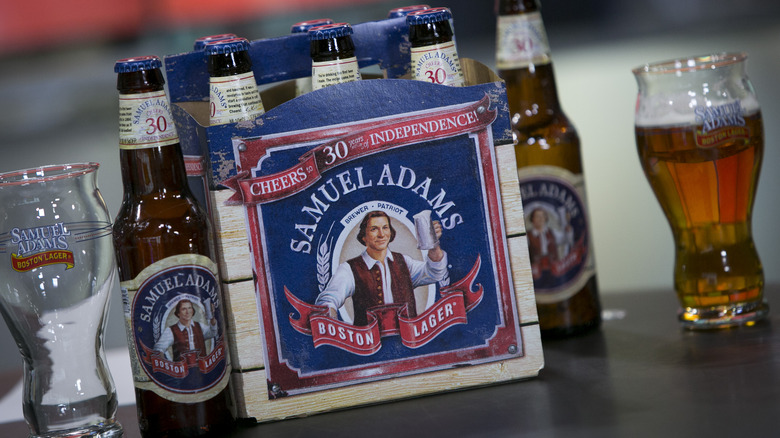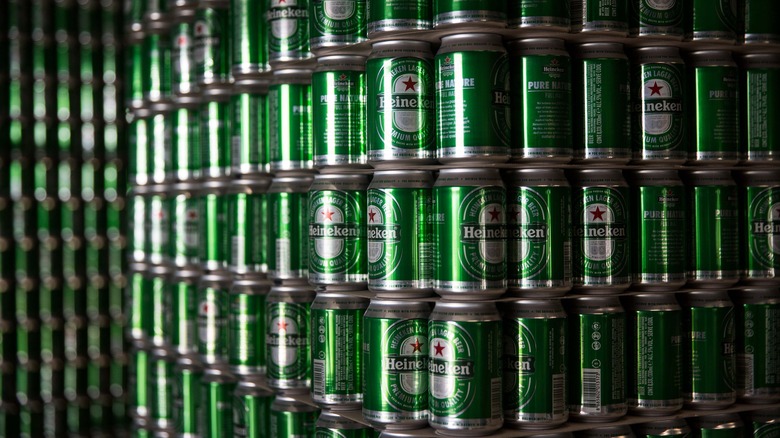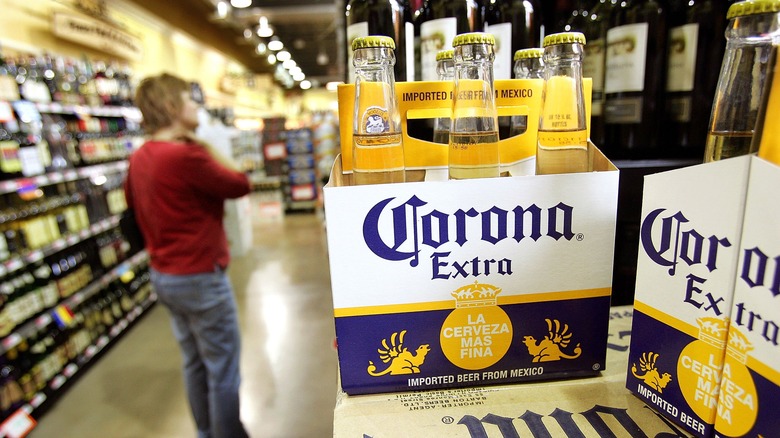How Long Beer Lasts In Cans Vs Bottles
In the alcohol aisle at the grocery store, you'll find beers packed in two kinds of containers: either classic, heavy glass bottles or in the sleek aluminum cans. Each type of beer container has its own pros and cons, but if you're stocking up on beer for the next few months, you might want to know which will allow your pint to last longer.
To begin with, both canned and bottled beers have remarkably similar shelf lives. Both are best enjoyed within six months of their production date (usually printed right on the label) and generally speaking, they both can remain good for one to two years.
However, this timeline only holds true when the beers are stored in optimal conditions. Specifically, in a cool, dry place that's away from direct sunlight. Under less-than-ideal conditions, you'll start to see noticeable differences in the longevity of beers stored in either type of container.
It comes down to storing your beer the right way
Unlike wine, beers aren't so delicate that you need a special chiller to keep them cool. However, as you'll typically find printed right on the bottle, they have ideal storage conditions, too.
First, let's talk about temperature. Whether it's canned or bottled, you want to keep your beer as cool as possible. The Brewers Association suggests the 3-30-300 Rule: When stored at 90 degrees Fahrenheit, your beer lasts three days; at 72 degrees Fahrenheit, it lasts 30 days; and at 38 degrees Fahrenheit, it lasts 300 days. So, when chilled just right, either canned or bottled beer can easily push a year's mark without a problem.
The second concern is light exposure. They really meant it when they wrote "keep away from direct sunlight" on the label. The bittering hops inside of beers react to sunlight, which will impart a skunky, stale taste to the beer. This is only a problem with bottled beers, as sunlight can penetrate the semi-transparent glass. Light has no impact on how long canned beer lasts, because cans are tightly sealed. Fortunately, breweries have worked around this by adding a dark brown tint to their glass bottles, which will block out a portion of the harmful UV light. That's why if you ever choose to store bottled beers long-term, you should pick up the dark-colored bottles rather than the transparent or green-colored ones, which won't last as long.
So, which one is really better?
With that said, if you're thinking long-term, the six-pack of cans seems like the better choice. Besides being lighter and more convenient to shelf, the cans — being light-blocking and airtight — will do a better job overall of protecting the beer than the bottles. However, while this would work if you're only packing away a few Bud Lights, many craft beer companies don't can their beer. Instead, most bottle them in bombers.
In that case, you'll have to make a bit more effort with the beer bottles to ensure the flavor stays at its best. Keep the bottles away from sunlight as much as you can, even if they come with a sunlight-blocking tint. Some types of bottled beer can start to taste skunky even after just a 30-second stint in sunlight.
Finally, no matter what kind of beer you have, it's all best stored in the fridge. The cooler temperature will keep their flavors from going off prematurely. If you follow all of these steps well, canned and bottled beers should last for up to a year and even beyond.


